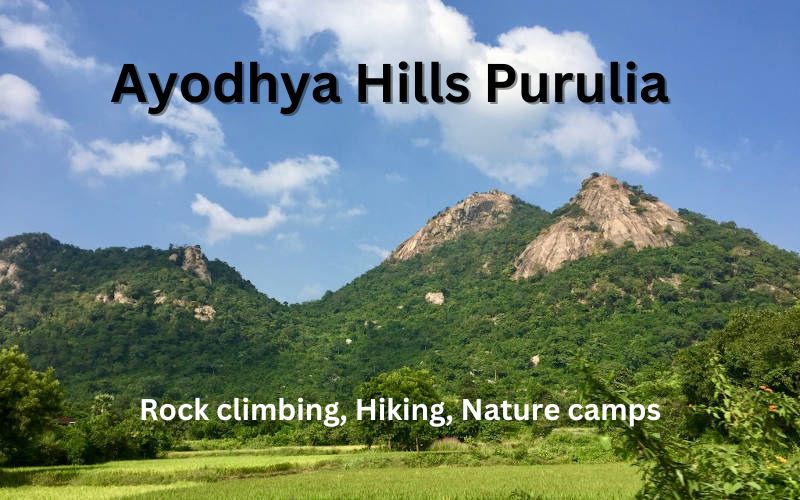
Ayodhya hills is at Purulia, the westernmost district of West Bengal, is characterized by its red soil, Chau Dance, and vibrant red Palash blooms. With its lush green landscapes, occasional rocky terrains, and rustic charm of the countryside, Purulia offers a perfect getaway for city dwellers in search of tranquility. Ayodhya Hills, a range covered in dense forests, is one of the most popular destinations in Purulia. Once a remote area, it has now become a sought-after travel spot in Bengal.
In this article, we will provide a 3-day itinerary for Ayodhya Pahar, including the must-visit places, the best time to visit, accommodation options, driving routes from Kolkata, and other essential information.
About Ayodhya Hills (অযোধ্যা পাহাড়) in Purulia:
Ayodhya Hills in Purulia is part of the Dalma Hills range, situated in the easternmost section of the Chhotanagpur Plateau. Spanning an area of 320 sq. km, Ayodhya Pahar stretches across Arsha, Jhalda, Baghmundi, and Balarampur blocks in the Purulia district.
The hills are predominantly covered with Sal and Segun forests, along with other vegetation such as Mahua, Palash, Kusum, Neem, and Bel. Some parts of the forest are dense and serve as habitats for various animals like deer, pigs, foxes, and elephants. Ayodhya Hills is also home to several tribal communities, including the Santhal, Birhor, Munda, and Bhumij tribes, who were once renowned hunters but have now adopted agriculture as their primary livelihood.
The elevation of Ayodhya Hills ranges from a few hundred feet to 2800 ft, with the highest peak being Gorgaburu (850+ meters), as per the Santhal language where ‘buru’ signifies hill.
Ayodhya Hills in Purulia – Distance from cities:
The nearest major town to Ayodhya Pahar is Purulia, which is located 40 km away from the hilltop. Ayodhya Hill is 84 km and 110 km from Jamshedpur and Ranchi respectively, situated near the Jharkhand border. The distance from Kolkata to Ayodhya Pahar is approximately 320 kilometers.
Ayodhya Hills (অযোধ্যা পাহাড়) Tour:
A 2 nights & 3 days would be ideal duration for Ayodhya Hills in Purulia, allowing you to explore all the prominant places in and around Ayodhya Pahar. However, you can customize the itinerary based on the number of days available and extend the tour to 5 days to cover all the tourist attractions in the Purulia district and its vicinity.
How to reach Ayodhya Hills from Purulia station:
From Purulia station, Ayodhya Hilltop is around 40 km away. It takes approximately 2 hours by cab or around two and a half hours by bus from Purulia bus terminus. The shortest road to the hilltop passes through Sirkabad, which is situated at the foothill of Ayodhya hill. Alternatively, you can also take two other routes to reach the hilltop, one via Baghmundi and another via Jhalda.
Day 1st:
We arrived at Ayodhya hilltop in the morning and checked into our resort. After resting for a couple of hours, we had lunch and proceeded to our first destination, Sita Kund, for sightseeing.
Sita Kund ( সীতা কুণ্ড )
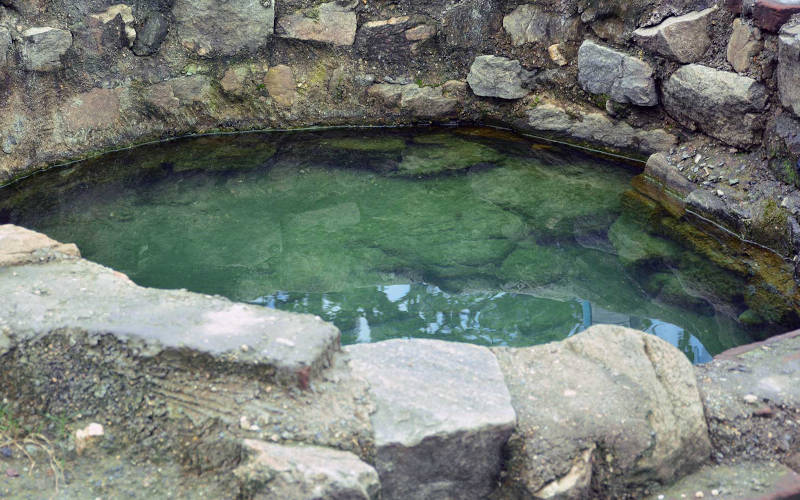
Sita Kund is a small shallow water body located in Bagandi village, where cold water bubbles up from the white sand base. This place holds an intriguing mythological story. According to the locals, Rama, the king, created the Kund by piercing the earth’s soil crust with his arrow to provide water for his wife, Sita, during their exile. This is why the place is called Ayodhya Hills by the locals. There is a small temple dedicated to Rama, situated just 500 meters away from Sita Kund.
Mayur Pahar ( ময়ুর পাহাড় )
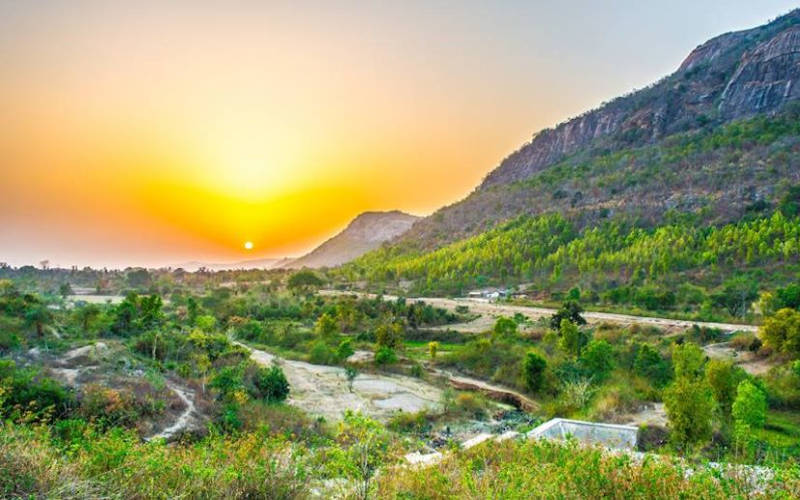
Next, we visited Mayur Pahar (Peacock Hill), which stands at an elevation of 605 meters above sea level. It offers a panoramic view of the entire Ayodhya Hills region and serves as a popular picnic spot for the locals. At the hilltop, there is a small temple to explore as well.
Marble Lake
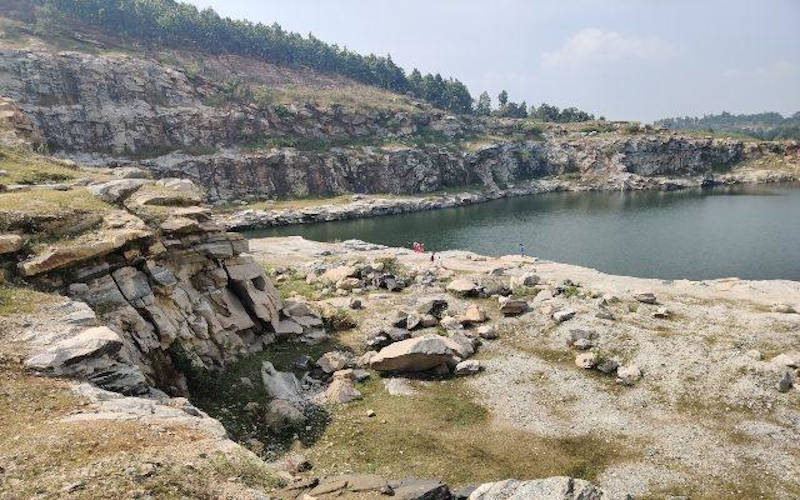
We then proceeded to Marble Lake, also known as Tarpania Lake, created by extracting hard rocks used in the construction of the PPSP dam. Situated in Tarpania village, the lake is surrounded by scattered rocks and boulders. You can enjoy a cup of tea in the small shacks at the parking lot and engage in conversations with the locals while taking in the view. There are two roads leading to the lake and the hill, both offering picturesque perspectives.
Murguma Lake
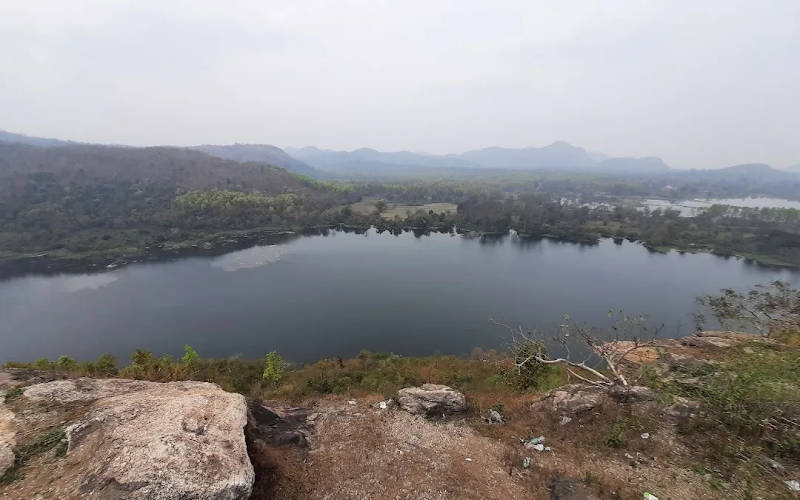
Our last destination for the day was Murguma Lake, one of the most beautiful lakes in Purulia. Surrounded by hills on three sides, it presents a mesmerizing sight during sunset. Located on the way to Jhalda from Ayodhya hilltop, the lake was formed by constructing a dam over the Girgiri Nala, a rivulet of the Kansai river. Basic accommodation options are available near Murguma dam, providing an opportunity to experience a peaceful retreat close to nature. Visitors can hike to nearby hillocks for a panoramic view of the lake or explore a nearby village to catch a glimpse of tribal life.
Day 2nd:
On the second day, we embarked on a full-day trip to places around Baghmundi and Balarampur.
PPSP Dams
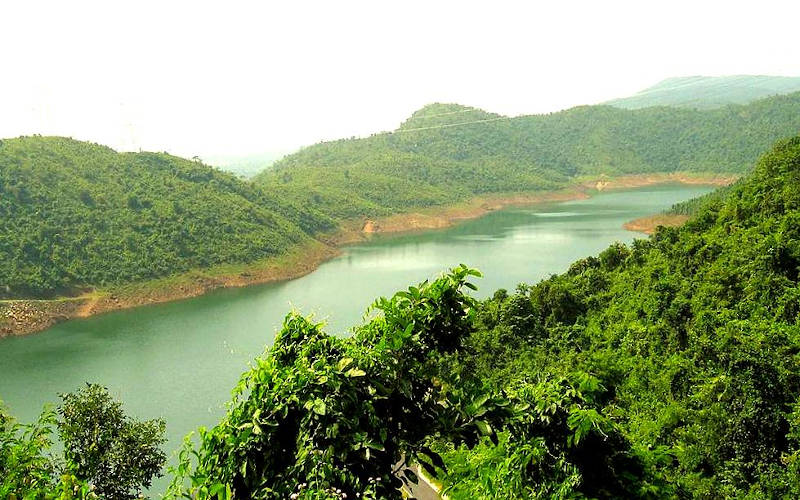
Our first stop was the PPSP Dams, part of the Purulia Pumped Storage Project. This hydel power project, operational since 2008, features two rock-fill dams known as the Upper Dam and Lower Dam, constructed for water storage. Situated in the Baghmundi block, these dams are en route to Baghmundi from Ayodhya hilltop. While visiting the dams, you can also explore the nearby Lohria Dam and Turga Dam. Tourists often visit the Lohria Shiv Temple while traveling to Baghmundi.
Charidah Village
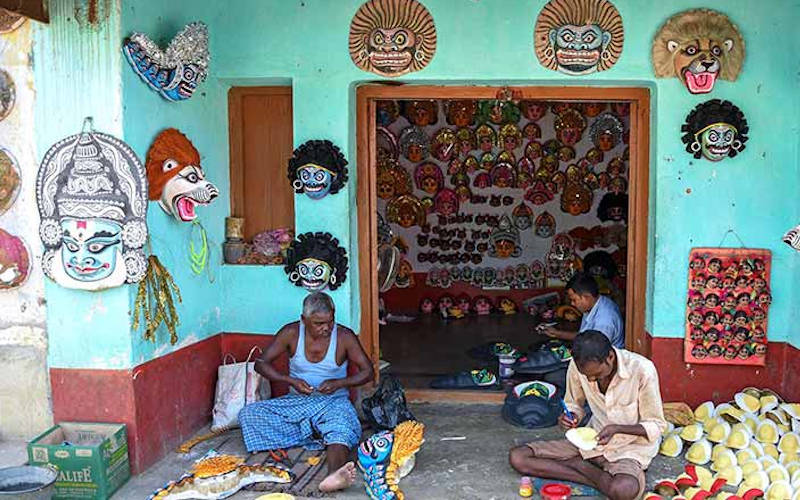
Next, we visited Charidah, a village known for its Chau mask makers. The village is filled with vibrant and colorful masks portraying animal faces and characters from epics. Numerous roadside workshops allow tourists to witness the intricate process of making these masks. Visitors also have the opportunity to purchase these masks directly from the artisans.
Chau Mask
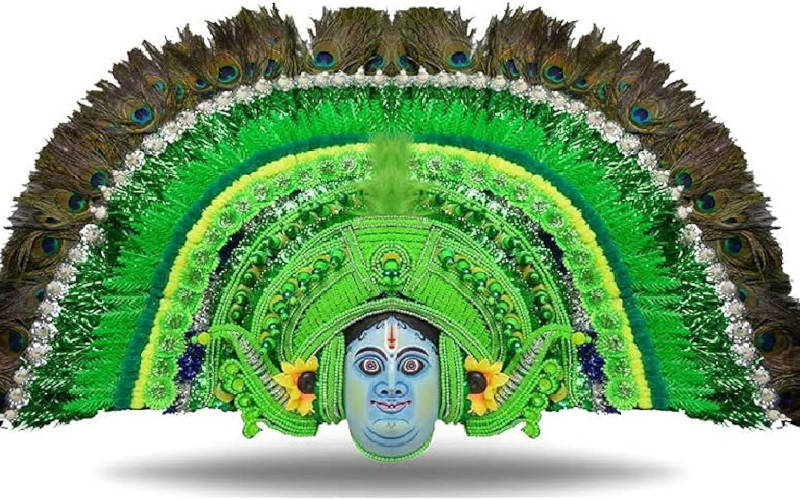
The tradition of Chau mask-making originated in Charida around 150 years ago during the rule of King Madan Mohan Singh Deo of Baghmundi. Gambhir Singh Mura, a renowned Chau dancer and Padma Shri awardee, popularized the art form. The Chhau masks of Purulia are registered in the List of Geographical Indications in India. The masks are categorized into those used for Chau Dance and those used for home decor. Each mask takes between two to seven days to complete and involves five elaborate processes. With around 500 families making their living by crafting these masks, Charidah can rightly be called an “artisans’ village.”
Khairabera Lake
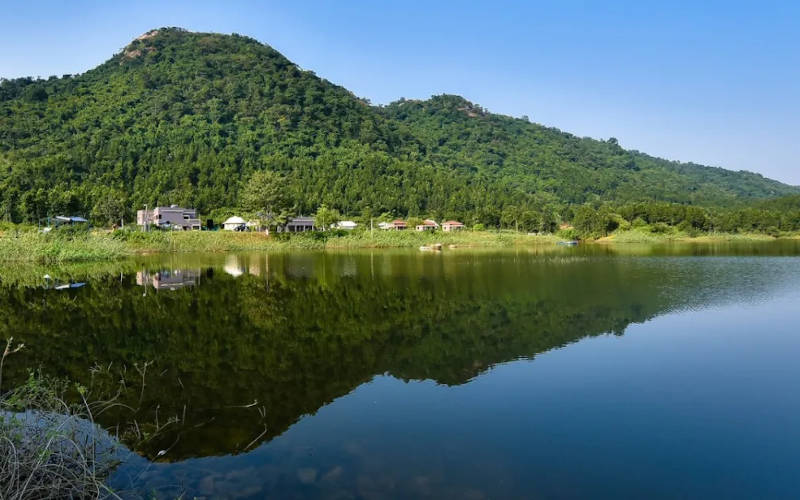
We then proceeded to Khairabera Lake, a pristine lake located at the foot of Chamtaburu Hill. This lake is part of the Khairabera Irrigation Dam and offers a picturesque setting. The narrow road leading to the lake passes through beautiful villages such as Bukadi and Barda, with agricultural lands on both sides. A resort beside the lake provides accommodations in cottages or tents, allowing visitors to immerse themselves in the tranquil surroundings. Activities like nature walks, hiking, kayaking, angling in the lake, and cycling along the village roads are offered by the resort.
Matha Forest
During our trip, we also explored Matha Forest, situated at the foothill of Mathaburu (Matha Hill) on the way to Balarampur. This conserved forest is popular among campers and climbers. The WBFDC bungalow offers a comfortable stay in this area. Another notable spot is Sonakupi village, located at the foothill of Kukuburu Hill, which features beautiful camping facilities to enjoy nature in all its glory.
Pakhi Pahar
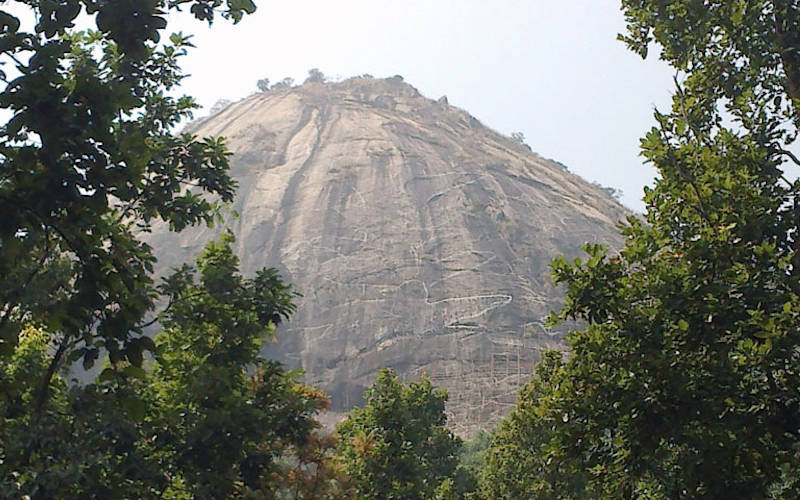
Our next destination was Pakhi Pahar, also known as Murraburu Hill. The hill is famous for its sculptures of different birds carved into the rock face by a dedicated veteran sculptor named Chitta Dey and his team. Over the past three decades, Chitta Dey has been tirelessly creating bird images on this hill, turning it into a massive bas-relief artwork. This unique attraction has become increasingly popular among tourists. Chitta Dey started with a few local youths, training them in rock sculpture and painting, and even running a school to educate and train more young individuals for sustainable livelihoods.
Pardi Dam
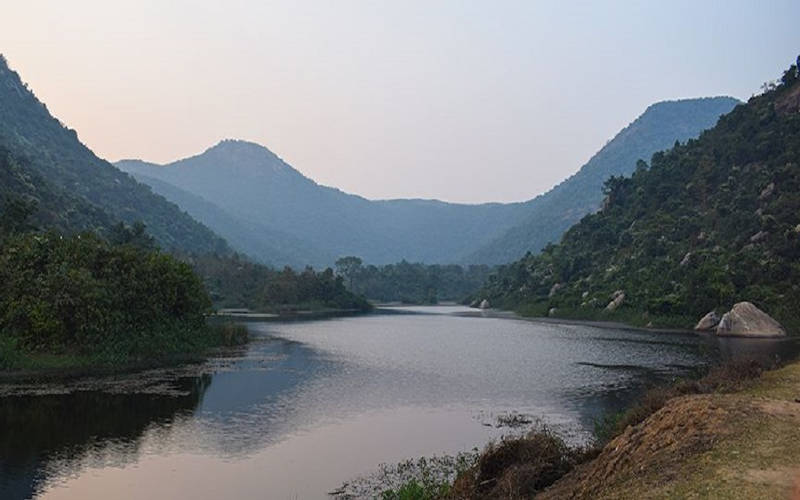
Our last stop for the day was Pardi Dam. To reach Pardi Dam, we traveled through Pardi village, and upon arrival, we were greeted by the sight of the dam situated on the Kathaljhuri River. Surrounded by hills on three sides, the calm waters of Pardi Lake reflect the majestic beauty of the landscape, creating a magical atmosphere, especially during sunset. Pardi Dam is one of the best-kept secrets among tourist destinations in Ayodhya Hills, offering a captivating experience.
These are just some of the remarkable places to visit during a 3-day itinerary in Ayodhya Hills, Purulia. Exploring the natural beauty, cultural heritage, and serene surroundings of this region will undoubtedly leave you with unforgettable memories.
Day 3rd:
Usuldungri
We started our day with a visit to Usuldungri, a hilltop with a stunning view of the Ayodhya Hills. The sunrise from Usuldungri was one of the most beautiful things I have ever seen.
Bamni Falls
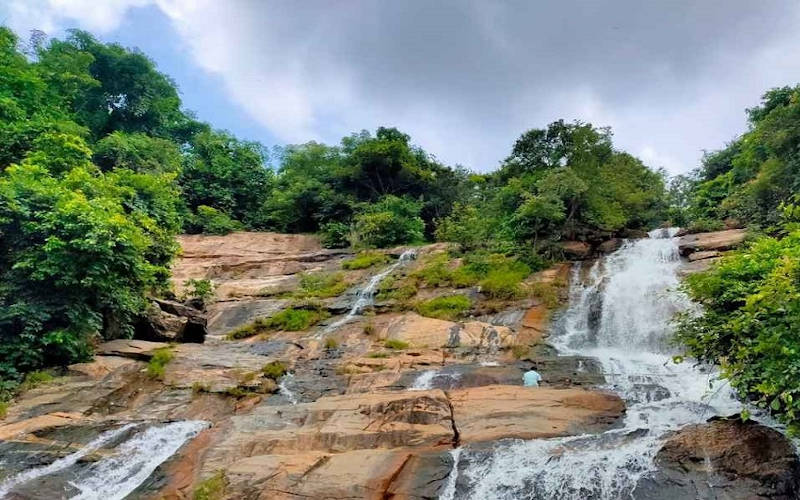
Afterwards, we went to Bamni Falls, a beautiful waterfall that cascades down a rocky cliff. The water is clear and refreshing, and it’s a great place to cool off on a hot day.
Turga Falls
Our next stop was Turga Falls, another beautiful waterfall that is located near the Turga Dam. The hike to the falls is a bit challenging, but it’s worth it for the views.
Deulghata
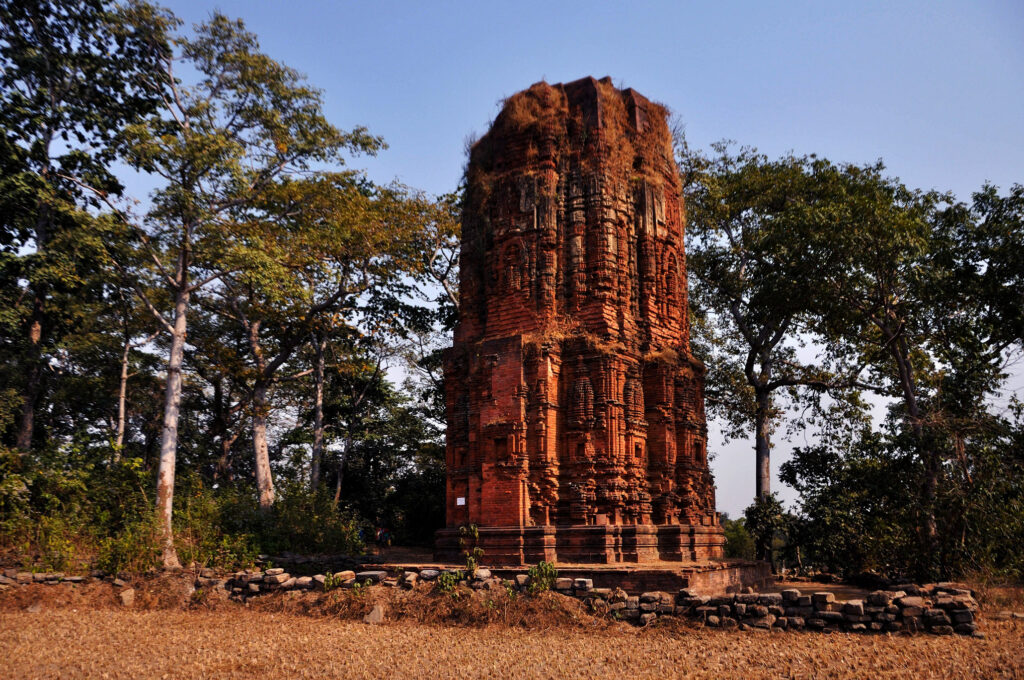
We finished our day with a visit to Deulghata, a village that is home to a number of 12th-century temples. The temples are in a state of disrepair, but they are still impressive to see.
Trekking / Rock climbing
There are a number of trekking and rock climbing opportunities in the Ayodhya Hills. Mathaburu (Matha Hill) is a popular spot for beginners, while Gajaburu is a more challenging climb. Dowry Khal is a 4-6 hour round trip hike that takes you to the source of the Shobha River.
Angling
There are a number of lakes in the Ayodhya Hills where you can go fishing. Khairabera Lake, Tarpania Lake (Marble Lake), and Murguma Lake are all popular spots.
Nature Camp
Matha is a popular place for nature camping. In winter, many organizations arrange nature camps for young children in the foothills of Ayodhya Pahar.
Village Tour
Charida is famous for Chau mask making. There are also a number of other tribal villages in the Ayodhya Hills where you can visit tribal lifestyles.
Murguma
You can stop in small villages on your way to Murguma Lake or take a leisure walk through Usuldungri village after watching the majestic sunrise in Ayodhya Hills. You can stay in Digardi village Homestay to experience rural life. If you are interested in seeing a traditional village market, you can go to ‘Begunkodar Hat’, which is 5 km ahead of Murguma Lake.
Chau Dance
Chau Dance is a traditional dance form mixed with martial art and acrobatic movements originating in the eastern part of India. Three types of this dance form are practised in three different districts of West Bengal, Jharkhand and Odisha. In 2010 the Chhau dance was inscribed in UNESCO’s Representative List of the Intangible Cultural Heritage of Humanity.
In West Bengal, Purulia is the only district where Chhau dance is practised. They are usually performed around a theme, based on epics like Ramayana and Mahabharata and other folklores. The use of large masks and vibrant costumes is an exclusive characteristic of the Purulia Chhau Dance. You may get to see them live at around ayodhya hills throughout the year.
Music plays an important role to set the mood of this open stage drama. Three main types of folk instruments accompany these performances – Dhol, Shehnai and Dhamsa. Musicians start performing live music 20-30 minutes before the actual dance to set the tune.
Mahisasurmardini is the most common story that Purulia Chau dancers enact. The stories usually are chosen on common propaganda – the power of gods always rising above the power of demons. Each performance usually lasts from 40 minutes to 1 hour. Many acrobatic movements dominate every performance – free swing in the air, side twist, rolling forward and backwards and rampant jumping.
They are held In the villages of Purulia, usually on open grounds, during Gajan Festival in Mid-April or other fairs and festivals. For the last few years, the Government of West Bengal is organising Chau-Jhumur Festival in December to encourage more tourists to visit Purulia around ayodhya hills and promote this indigenous art form in front of a global audience.
Festivals
The villages of Purulia celebrates many festivals, some of which are specific to one particular tribe around ayodhya hills. Some of the most prominent and indigenous festivals that are celebrated by the tribes in Purulia are :–
Gajan
Gajan or Charak Puja – This is celebrated from March to May-end in different parts of the Purulia district.
Disum Sendra
Disum Sendra or Sikar Parab – It is a hunting festival celebrated by the Santhal community in the Ayodhya Hills areas. This festival is held in April.
Bandhna Parab
Bandhna Parab – It is celebrated by most tribes in Purulia specially around ayodhya hills. Animals used for farming are worshipped as the god during this festival. Tribal families paint their houses with vibrant colours during this time. This festival is held in October/ November.
Tushu Parab
Tushu Parab – This is celebrated by rural women who share their joy, sorrow and experiences with Tusurani
Also Read: Visit beautiful places in Jharkhand
